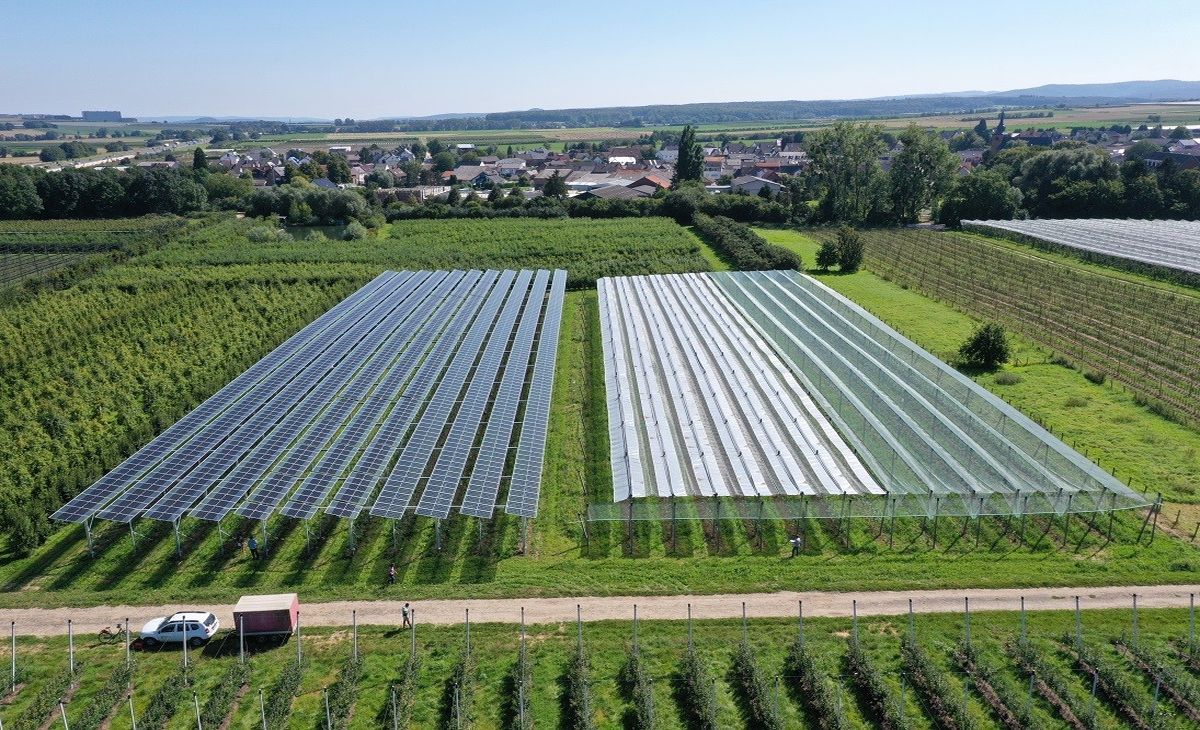
Agrivoltaics is a groundbreaking approach that combines agriculture with solar energy production. By placing solar panels above crops, farmers can generate electricity while still growing food. This dual-use system maximizes land efficiency, providing a sustainable solution for energy and food production. Agrivoltaics offers numerous benefits, including improved crop yields, reduced water usage, and additional income for farmers. It also helps combat climate change by reducing greenhouse gas emissions. Curious about how this innovative method works and its impact on the environment? Here are 25 facts that will shed light on the fascinating world of agrivoltaics.
Key Takeaways:
- Agrivoltaics combines farming with solar energy, helping farmers grow crops and generate electricity on the same land. It can increase land efficiency, protect crops, and reduce water usage, benefiting both agriculture and the environment.
- Farmers can earn extra income and reduce energy costs with agrivoltaics. It also supports biodiversity, reduces carbon emissions, and improves soil health. With technological advancements and global adoption, agrivoltaics is revolutionizing sustainable farming and renewable energy production.
What is Agrivoltaics?
Agrivoltaics combines agriculture with solar energy production. This innovative approach maximizes land use by integrating solar panels with crop cultivation. Here are some fascinating facts about agrivoltaics.
-
Dual Purpose Land Use: Agrivoltaics allows land to serve two purposes simultaneously: growing crops and generating solar power.
-
Increased Land Efficiency: By combining farming and solar energy, agrivoltaics can increase land efficiency by up to 60%.
-
Microclimate Creation: Solar panels create a microclimate that can protect crops from extreme weather conditions.
-
Water Conservation: The shade from solar panels reduces water evaporation from soil, conserving water resources.
-
Crop Yield Improvement: Some crops, like lettuce and spinach, have shown improved yields when grown under solar panels.
Benefits to Farmers
Agrivoltaics offers numerous benefits to farmers, from financial gains to environmental advantages.
-
Additional Income: Farmers can earn extra income by leasing land for solar panel installations.
-
Energy Independence: Agrivoltaics can provide farmers with a reliable source of renewable energy, reducing dependence on external power sources.
-
Reduced Energy Costs: By generating their own electricity, farmers can lower their energy bills.
-
Enhanced Crop Protection: Solar panels can shield crops from hail, heavy rain, and strong winds.
-
Extended Growing Seasons: The microclimate created by solar panels can extend the growing season for certain crops.
Environmental Impact
Agrivoltaics has a positive impact on the environment, contributing to sustainability and reducing carbon footprints.
-
Reduced Carbon Emissions: By generating renewable energy, agrivoltaics helps reduce greenhouse gas emissions.
-
Biodiversity Support: Agrivoltaic systems can support biodiversity by providing habitats for various species.
-
Soil Health Improvement: The shade from solar panels can prevent soil erosion and maintain soil moisture levels.
-
Reduced Pesticide Use: The microclimate created by solar panels can reduce the need for pesticides.
-
Lower Water Usage: Agrivoltaics can decrease water usage in agriculture by reducing evaporation rates.
Technological Advancements
Technological advancements have made agrivoltaics more efficient and accessible.
-
Bifacial Solar Panels: These panels capture sunlight from both sides, increasing energy production.
-
Adjustable Panels: Some systems feature adjustable panels that can be tilted to optimize sunlight exposure for crops and energy generation.
-
Smart Monitoring Systems: Advanced monitoring systems can track energy production and crop health in real-time.
-
Innovative Designs: New designs, such as elevated solar panels, allow for easier access to crops and machinery.
-
Integration with IoT: Internet of Things (IoT) technology can enhance the efficiency of agrivoltaic systems by automating processes and collecting data.
Global Adoption
Agrivoltaics is gaining popularity worldwide, with various countries adopting this sustainable practice.
-
Germany's Pioneering Efforts: Germany has been a leader in agrivoltaics, with numerous projects demonstrating its benefits.
-
Japan's Solar Sharing: Japan has implemented "solar sharing" projects, where solar panels are installed above crops to maximize land use.
-
United States Initiatives: Several states in the U.S. are exploring agrivoltaics to promote renewable energy and sustainable farming.
-
France's Agrivoltaic Farms: France has established agrivoltaic farms that combine vineyards with solar energy production.
-
China's Large-Scale Projects: China is investing in large-scale agrivoltaic projects to meet its renewable energy goals and support agricultural development.
Agrivoltaics: A Bright Future
Agrivoltaics blends agriculture and solar energy in a way that benefits both. Farmers can grow crops while generating renewable energy, making their land more productive. This dual-use approach helps combat climate change by reducing carbon emissions. It also provides a steady income for farmers, making agriculture more sustainable.
Research shows that certain crops thrive under solar panels, benefiting from the shade they provide. This innovative method can also conserve water, as the panels reduce evaporation. As technology advances, agrivoltaics could become a key player in the fight against global warming.
By combining food production with clean energy, agrivoltaics offers a promising solution for a sustainable future. It's a win-win for both the environment and the economy. Keep an eye on this exciting field—it’s set to grow rapidly in the coming years.
Frequently Asked Questions
Was this page helpful?
Our commitment to delivering trustworthy and engaging content is at the heart of what we do. Each fact on our site is contributed by real users like you, bringing a wealth of diverse insights and information. To ensure the highest standards of accuracy and reliability, our dedicated editors meticulously review each submission. This process guarantees that the facts we share are not only fascinating but also credible. Trust in our commitment to quality and authenticity as you explore and learn with us.
